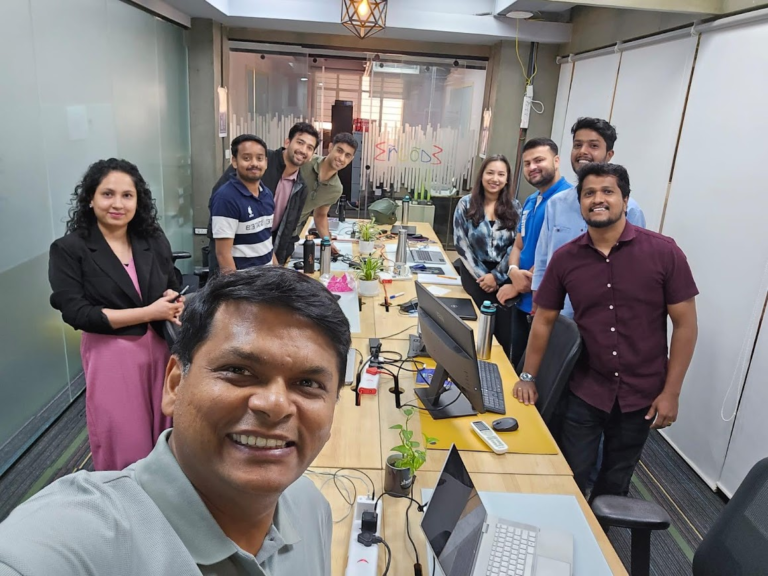Let’s face it: life doesn’t always go as planned. Whether you’re leading a business, managing a team, or simply figuring out your next career move, the ability to adapt isn’t just a skill—it’s survival.
But here’s the thing: resilience isn’t about toughing it out or pushing through. It’s about learning to navigate change gracefully, making adjustments along the way, and finding strength in flexibility.
For me, adaptability feels a lot like a road trip (and I love a good road trip analogy). You plan your route, pack your bags, and set out with excitement. Then—out of nowhere—you hit a detour. You can panic, blame the GPS, and waste time arguing with yourself about how unfair it is. Or you can take a deep breath, find an alternate path, and maybe even discover a scenic view you didn’t expect.
The detours in life are inevitable, but resilience? That’s a choice.
Here’s how I’ve learned to embrace change and bounce back stronger, in both business and life.

Here’s something I’ve learned from running Ergode: no two markets are the same, no two customers want the exact same thing, and no two days go as planned.
Take our work with a few of our brands like Red Cup Living and Shalin India. Each product requires us to think differently—whether it’s understanding the mindset of a party-loving customer or someone looking for handcrafted home decor. There’s no one-size-fits-all approach. Instead, we treat each market like a unique puzzle and constantly refine how we solve it.
For me, flexibility started with small mindset shifts. Early in my career, last-minute changes used to stress me out. But over time, I’ve learned that staying rigid only adds to the pressure. Now, when plans change, I lean into the opportunity to experiment.
Let’s say a project deadline gets moved up unexpectedly. My first thought isn’t, This is impossible! Instead, I ask, What’s my next move? Staying flexible means focusing on what I can control and letting go of what I can’t—and trust me, it’s a game-changer.

Conflict gets a bad rap. Most of us treat it like a disaster, something to avoid at all costs. But I’ve learned that conflict is often just a signal that something needs attention.
Take a moment to think about your own team or workplace. Have you ever seen two departments lock horns over a strategy? It’s frustrating, sure, but it’s also a sign that people care—and that there’s potential for a stronger solution if both sides can work together.
At Ergode, I’ve developed a framework called L.A.A. to handle these situations:
The truth is, conflict handled well can strengthen your team, deepen trust, and even lead to breakthrough ideas. So the next time you encounter it, don’t fear it. Use it.

I used to think resilience was all about being tough. But here’s the reality: resilience has less to do with powering through and more to do with emotional agility—the ability to manage your emotions effectively when the stakes are high.
Let me give you an example. Imagine you’re in the middle of a high-stakes meeting, and someone blindsides you with unexpected feedback. It’s easy to feel defensive or frustrated at the moment (I’ve been there). But emotional agility isn’t about suppressing those feelings—it’s about pausing, taking a breath, and choosing your response thoughtfully.
One tool that’s helped me immensely is the STOP method:
This process has saved me from countless knee-jerk reactions and allowed me to approach challenges with a clear head. Whether it’s a tough conversation, a missed opportunity, or an unexpected roadblock, emotional agility keeps you grounded—and that’s where true resilience lives.

One of the biggest lessons I’ve learned at Ergode is that adaptability isn’t a milestone you reach. It’s a practice you cultivate every day.
When we started selling books online, e-commerce was still in its infancy. We had to figure things out as we went—learning about market trends, adapting to customer expectations, and embracing new technologies. It wasn’t always smooth sailing, but each challenge taught us something valuable.
Fast forward to today, and we’re a global e-commerce accelerator & brand aggregator, working with brands across industries. That growth didn’t happen because we had all the answers upfront. It happened because we committed to a simple cycle: Learn, Adapt, Repeat.
This process has become part of our DNA, and it’s one I apply to my personal life as well. When something doesn’t go as planned, I ask myself: What did I learn? How can I adapt? What’s my next step?
Here’s what I know for sure: life will throw you curveballs. Your success—whether in business, relationships, or personal growth—depends on how you handle them.
Adaptability isn’t a talent reserved for a select few. It’s a skill you can build, one small step at a time. Start by practicing flexibility in the face of change, seeing conflict as an opportunity for growth, and cultivating emotional agility under pressure.
The secret isn’t just to bounce back but to bounce forward—learning, growing, and evolving with every challenge. So the next time life reroutes your path, don’t see it as a setback. See it as your chance to discover a new way forward.
Until next time,
Rupesh